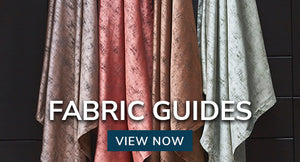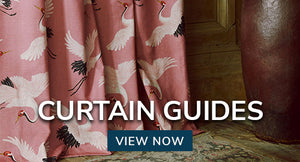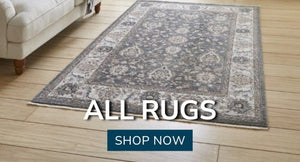What is organza? How to use it in your home
Last but by no means least, we will be rounding up our beginner's fabric guide with not one - but two beautiful fabrics for your home decorating. Voiles fabric & organza have their similarities in that they are both sheer, lightweight fabrics. Voile is a lightweight woven fabric that is either made up of 100% cotton or a blend with linen or polyester.
Organza is also a sheer but traditionally made with silk fibres; today it is also produced with synthetic fibres such as polyester or nylon. We try to dig up some historical facts on these two fabrics, plus ideas for using it the home - not forgetting a key look!
History of voiles
For History Buffs Voile is a word with as much history as the fabric itself - coming from the French word veile, which in turn came from the Latin word vela, meaning 'covering'. Historically only made from 100% cotton, voile has been produced for centuries - first by hand and then by machinery. It is suggested that Organza has been around at least since the middle ages, its name having derived from Urgang - an ancient part of Turkestan with a flourishing silk market.
Voile & Organza for Interior Designers Voile is mostly used to make curtains in home décor and is admired for its sheer opaque appearance. The fabric itself is very versatile and therefore it isn't uncommon to customize other decorative elements of the home with it - some use it to create bed canopies for example.
Inexpensive voile fabric
Another positive is that the material can be bought very inexpensively. It has a loose weave which is what gives it the semi-transparent quality - most would agree that it looks both very elegant and romantic when swaying gently in the breeze!
One of the best looks you can get with voile curtain fabric is to place it in the windows with another more opaque curtain fabric - or layering different colours of voile itself. Organza can be bought either made from silk or from synthetic fibres (usually nylon, rayon or polyester). Both varieties are versatile for use in home decorating and interior designers are big fans!
The weaves are flat and the material lightweight and thin; surprisingly though, the material is quite stiff due to the tight, twisted fibres. There is a wide range of colours to choose from and some interesting embroidered designs too. Often it is used to line drapes, create valances, curtains and tiebacks - although it has also been used to cover lampshades (just make sure you have a low wattage).
Key look for voile or organza
A lounge or sun room will be used for our key look example - but you can use either of these fabrics in any room of the home, so versatile that they are! We want to work with a neutral colour palette of white, cream and ivory - a totally serene and dreamlike combination.
Start with cream walls and white ceiling; for flooring we recommend some added warmth and a natural element of wood floorboards or parquet - with a polish it helps to reflect light. This look works well with patio doors and windows either side - but otherwise just dress your windows with Roman blinds and voile/organza panels together.
For the sun room/lounge leading to a patio, a white or ivory voile/organza fabric is hung from a black curtain poles or tension rods. Use organza for its stiffness when creating curtain tie backs UK. White Roman blinds dress up the windows at either side and wicker chairs nearby, upholstered in cream. The only accessories you need are a few potted green plants for total serenity!



























































